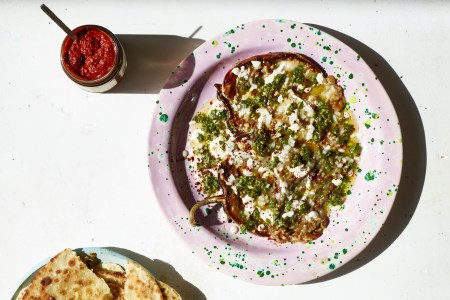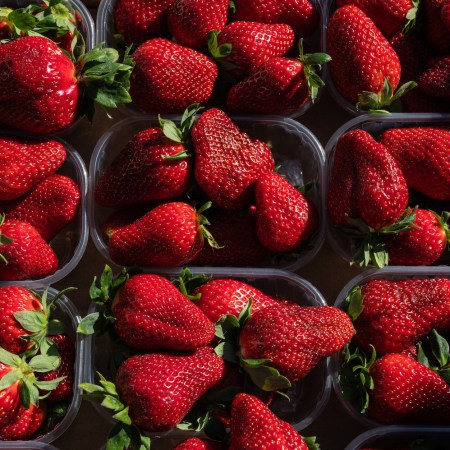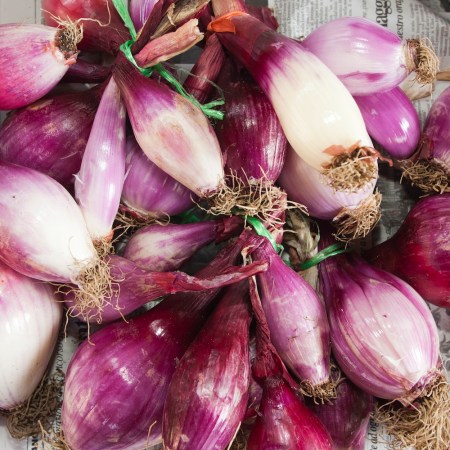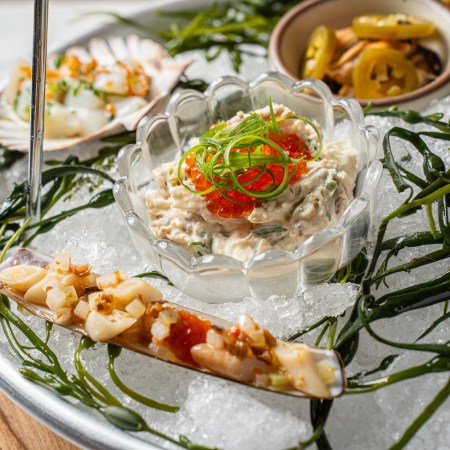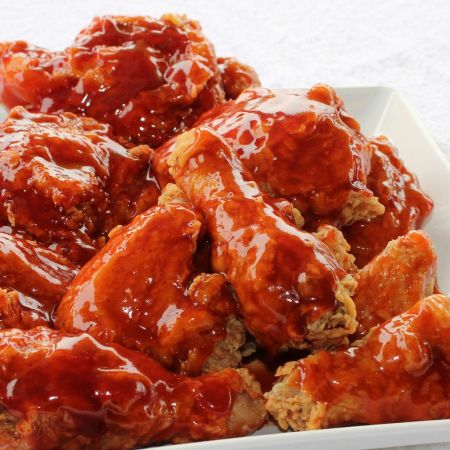Welcome to our summer produce series. Every week until the end of August, we’re highlighting the most in-season fruit or veggie of the moment, as handpicked by the experts at Natoora. You can learn more about the company and how they work with farmers in our first piece of the series.
Cherry season is here! It’s difficult to choose a favorite summer fruit, but it’s really difficult to beat the honeyed, red morsels. And while sweet cherries are ripe and ready for snacking, it’s also high time for sour cherries. As the name suggests, they are higher in acid, but their sugars condense as you cook them, making sour cherries perfect for baking and making jam.
“Sour cherries have a fleeting season, available only for a few weeks in early summer,” says Natoora brand manager Phoebe Creaghan. “With bright red skin and juicy flesh, they have a highly tart and slightly tannic flavor with low sugars. They thrive in the Northeast, as California temperatures are too warm during the summer.”
Eggplant Season Is Now. Here’s How to Make the Most of It.
Chef Camille Becerra shares her recipe for a roasted eggplant dip that’s bursting with flavorIf you’re lucky enough to find sour cherries at your local market this week, jump on them, as this uniquely flavored fruit is one of the season’s most fleeting. Here’s a rundown of everything you need to know, courtesy of Natoora:
- What to look for when shopping: Ripe, bright red fruits. They’ll be softer and more aqueous than sweet cherries, almost bursting with juice.
- How to store for maximum freshness: Keep cold, handle delicately
- How to use: Sour cherries are quite tart, typically not suitable for fresh eating. But once cooked, the acidity mellows out. They are excellent for making jam, baking in tarts or pies, or using in an agrodolce. Less hard to find are black sour cherries (Morello). They are darker in color but suitable for similar applications and also for making liqueur.

The Recipe
Mustard is my favorite condiment. Yes, I love mayonnaise and like ketchup just fine, but mustard and all its variations take the cake — hot, honey, Dijon, whole grain and even good old yellow. There’s nothing that beats that acidic tang, and my mouth waters just thinking about it. It’s one of those things that’s super easy to buy, but it’s also incredibly satisfying to make your own. And one of my favorite recipes comes from Steve McHugh in his 2024 cookbook Cured: Cooking With Ferments, Pickles, Preserves & More. Not only does he have a signature house mustard in the book, but he also has variations like beer, sambal and sour-cherry mustard.
So if you want to try the latter for yourself, get to the farmers market this week while this of-the-moment ingredient is still at its prime.
Cherry Mustard from "Cured"
Servings: 2.5 cups
Ingredients
- 1/2 cup yellow mustard seeds
- 1/2 cup brown mustard seeds
- 1/2 cup plus 2 Tbsp. Champagne vinegar
- 3/4 cup pitted sour cherries
- 1/2 cup honey
- 1/4 cup packed light brown sugar
- 1 tsp. salt
Directions
-
-
Heat Champagne vinegar and sour cherries in a small saucepan over low heat for 10 minutes.
-
Combine mustard seeds and vinegar-cherry mixture in a bowl or jar and cover. Allow the seeds to soak overnight at room temperature. They will absorb nearly all the vinegar.
-
Add the mustard-seed mixture to a blender or food processor with the honey, brown sugar and salt and puree until smooth.
-
Transfer to a jar, cover and refrigerate for 2 weeks to allow the harshness and heat of the seeds to mellow. After those 2 weeks, the mustard will hold in the refrigerator for up to 4 months.
-
Reprinted with permission from “Cured” by Steve McHugh & Paula Forbes, copyright © 2024.
Photographs by Denny Culbert. Published by Ten Speed Press, a division of Penguin Random House, LLC.
Join America's Fastest Growing Spirits Newsletter THE SPILL. Unlock all the reviews, recipes and revelry — and get 15% off award-winning La Tierra de Acre Mezcal.

